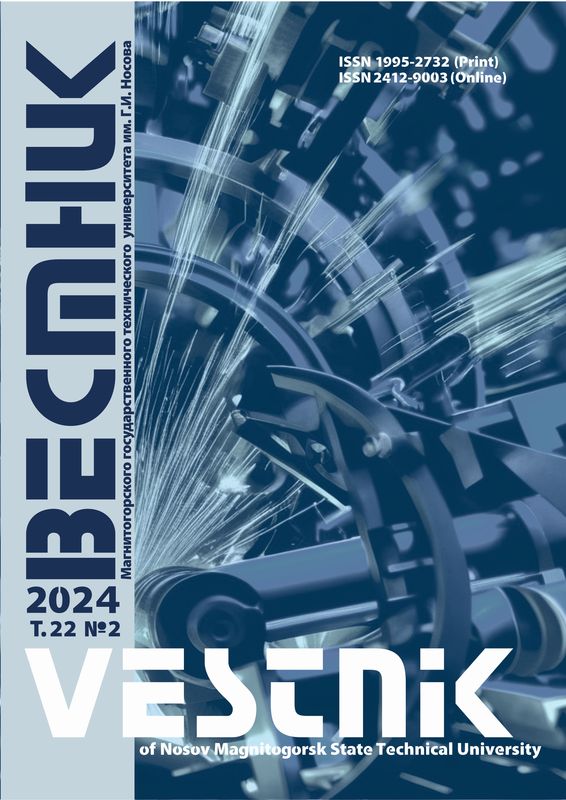DOI: 10.18503/1995-2732-2024-22-2-139-144
Abstract
Problem Statement (Relevance). Roller bearings are the most widely used supports for rotating parts of machines. Along with the undeniable advantages, whose main ones include high efficiency and compactness, there are a number of disadvantages. The main disadvantages are high requirements for accuracy of mounting surfaces. Requirements for support necks are dimensional accuracy, surface roughness, and accuracy of relative positioning of mounting surfaces. A certain gap in this case is insufficiently clearly formulated and justified requirements in terms of accuracy of the shape of mounting surfaces in the cross section. Objectives. The research is aimed at studying the influence of the shape accuracy (out-of-roundness) of the shaft mounting surfaces on the quality of roller bearing fits. Methods Applied. The research uses methods of mechanical engineering technology, calculations of part fits, methods of studying accuracy of the shape and the finite element method. Originality. A comprehensive technical and economic analysis contains a rationale for accuracy of the shape of the mounting surfaces for roller bearings, which provide the required mounting parameters at the optimal cost. Result. The authors studied the influence of mounting surface shape error in the cross-section on interference fit parameters. The Kompas software suite was applied to investigate the effect of shape deviations in the cross-section on the value of the contour coefficient of friction at the place of fitting the roller bearing on the shaft. The authors determined the relationship between this indicator and the shape error and provided an economic rationale for the results. Practical Relevance. The developed finite element model makes it possible to investigate the interaction between the mounting surfaces of the shafts and the inner rings of the roller bearings. It is possible to change physical and mechanical properties of a material of parts, acting loads and other parameters of the interaction. Using the obtained results at the stage of designing machine assemblies makes it possible to improve the quality of products by reducing the number of turns of the inner bearing ring and, as a result, reducing the intensity of wear of these interfaces.
Keywords
fit, tightness, error, bearing, contact
For citation
Rogov E.Yu., Ovsyannikov V.E., Kulemina A.A., Kovenskii I.M. Some Aspects of Process Quality Assurance of Roller Bearing Fit. Vestnik Magnitogorskogo Gosudarstvennogo Tekhnicheskogo Universiteta im. G.I. Nosova [Vestnik of Nosov Magnitogorsk State Technical University]. 2024, vol. 22, no. 2, pp. 139-144. https://doi.org/10.18503/1995-2732-2024-22-2-139-144
1. Golygin N.Kh., Ped S.E., Druzhinin P.V., Boitsov A.G. Osnovy vzaimozamenyaemosti: ucheb. posobie dlya vuzov [Basics of interchangeability: study guide for universities]. Moscow: Moscow State University of Geodesy and Cartography. 2020, 316 p. (In Russ.)
2. Kulikov A.A., Sapozhnikov I.I. Ensuring interchangeability in fitting roller bearing rings. Tekhniko-tekhnologicheskie problemy servisa [Technical and Technological Problems of Service]. 2020;(2(52)):17-20. (In Russ.)
3. Kokorev Yu.A., Zvyagin F.V. Sposoby rascheta tochnostnykh kharakteristik detaley i uzlov priborov [Methods of calculating the accuracy characteristics of parts and components of instruments]. Moscow: Bauman Moscow State Technical University, 2018, 211 p. (In Russ.)
4. Kupriyanov A.Yu. Strength of a joint with tension in case of the shape geometry error. Vestnik Khersonskogo natsionalnogo tekhnicheskogo universiteta [Bulletin of Kherson National Technical University]. 2015;(3):145-150. (In Russ.)
5. Bezyazychny V.F. Metod podobiya v tekhnologii mashinostroeniya: monografiya [A similarity method in mechanical engineering technology: monograph]. Moscow: Infra-inzheneriya, 2021, 356 p. (In Russ.)
6. Ogar P.M, Gorokhov D.B, Turchenko A.V. Mekhanika kontaktirovaniya sherokhovatykh poverkhnostey [Rough surface contact mechanics]. Bratsk: Bratsk State University, 2016, 282 p. (In Russ.)
7. Kozlov A.A., Kozlov A.M. Raschet rezhimov rezaniya: ucheb. posobie [Calculation of cutting modes: study guide]. Lipetsk: Lipetsk State Technical University, 2017, 96 p. (In Russ.)
8. Dudak N.S., Kasenov A.Zh. Raschet rezhimov rezaniya: ucheb. posobie [Calculation of cutting modes: study guide]. Almaty: Evero, 2015, 128 p. (In Russ.)
9. Vasilyev A.S., Kutin A.A. Spravochnik tekhnologa-mashinostroitelya [Mechanical engineer’s reference book]. In 2 vol. Vol. 1. Moscow: Innovatsionnoe mashinostroenie, 2018, 756 p. (In Russ.)
10. Ostapchuk A.K., Ovsyannikov V.E., Rogov E.Yu. Raschet parametrov korrelyatsionnoy modeli profilya poverkhnostey, obrabatyvaemykh rezaniem [Calculation of correlation model parameters of the profile of surfaces machined by cutting]. Patent RU, no. 2012611804, 2012.












